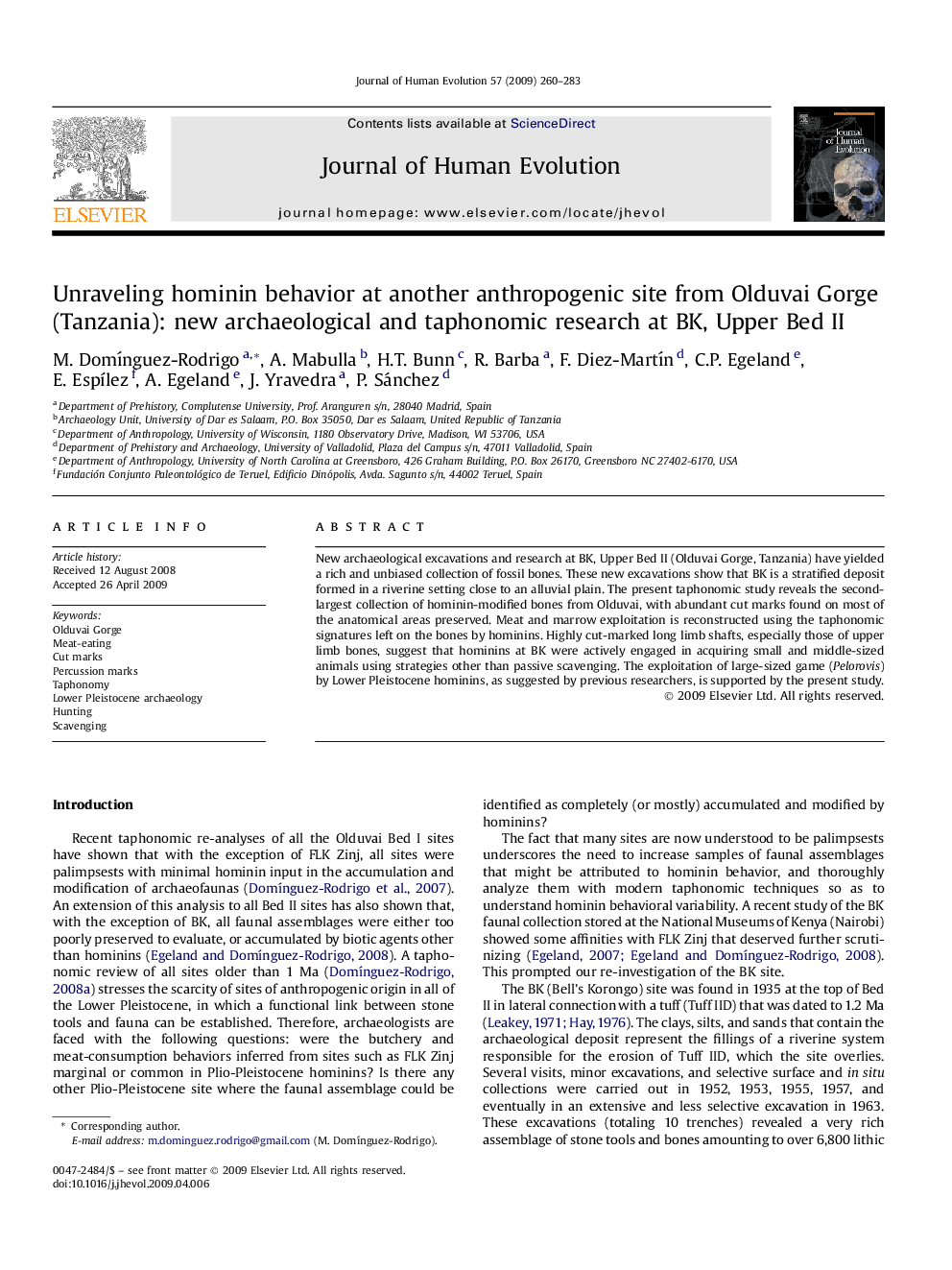| Article ID | Journal | Published Year | Pages | File Type |
|---|---|---|---|---|
| 4557043 | Journal of Human Evolution | 2009 | 24 Pages |
New archaeological excavations and research at BK, Upper Bed II (Olduvai Gorge, Tanzania) have yielded a rich and unbiased collection of fossil bones. These new excavations show that BK is a stratified deposit formed in a riverine setting close to an alluvial plain. The present taphonomic study reveals the second-largest collection of hominin-modified bones from Olduvai, with abundant cut marks found on most of the anatomical areas preserved. Meat and marrow exploitation is reconstructed using the taphonomic signatures left on the bones by hominins. Highly cut-marked long limb shafts, especially those of upper limb bones, suggest that hominins at BK were actively engaged in acquiring small and middle-sized animals using strategies other than passive scavenging. The exploitation of large-sized game (Pelorovis) by Lower Pleistocene hominins, as suggested by previous researchers, is supported by the present study.
